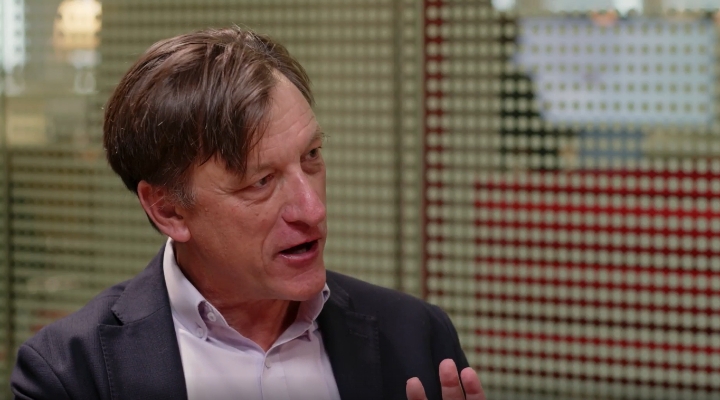
Choosing funds for your investment portfolio can be incredibly difficult, with thousands upon thousands of options to choose from. But even once you have decided which fund you want, you could wind-up losing out massively just by picking the wrong share class.
All funds have more than one share class and some have dozens. Which share class you choose is indicated by the letter that appears after a fund's name, "A", "R" or "Z", for example. And while each will give you access to the same fund, manager and underlying holdings - they all have different fees, meaning the returns you get on your investment could be vastly different depending on which one you choose.
But navigating these share classes can be a nightmare for investors. The main problem is the lack of consistency over what the letters mean. Does "R" stand for retail or ragu? There is no standard to help investors decide which letter to choose.
New regulation now asks firms to assess the value their funds are providing to investors in so-called Fund Value reports. The move has already seen a number of fund houses close expensive legacy share classes and move investors to cheaper versions, but there is still work to do.
“Some investors might not realise they are investing in an expensive share class, when a cheaper one is available,” says Morningstar associate analyst Bhavik Parekh.
How Fund Fees Eat Into Returns
We have looked at 10 different open-ended funds that are rated by Morningstar analysts - nine actively managed and one passive - and analysed each share class to find the ones with the cheapest annual charge and the most expensive. We have looked at a mix of equity funds from different categories to highlight that the discrepancy in fees exists across a range of investment areas.
|
|
Ongoing Charge (%) |
5-Year Cumulative Return (%) |
||||
|
Fund Name |
Cheapest |
Most Expensive |
Difference |
Cheapest |
Most Expensive |
Difference |
|
Blackrock UK |
0.84 |
1.67 |
0.83 |
57.7 |
51.1 |
6.6 |
|
Fidelity European |
0.92 |
1.67 |
0.75 |
75.8 |
69.3 |
6.5 |
|
Invesco High Income UK |
0.87 |
1.67 |
0.80 |
14.0 |
9.5 |
4.5 |
|
Janus Henderson European Focus |
0.85 |
1.71 |
0.86 |
61.6 |
54.8 |
6.8 |
|
L&G UK Index |
0.06 |
0.48 |
0.42 |
44.1 |
39.7 |
4.4 |
|
Man GLG Japan CoreAlpha |
0.9 |
1.65 |
0.75 |
68.7 |
62.4 |
6.3 |
|
Merian UK Mid Cap |
0.7 |
1.60 |
0.90 |
80.1 |
72.2 |
7.9 |
|
Rathbone Income |
0.53 |
1.53 |
1.00 |
40.8 |
33.9 |
6.9 |
|
Schroder Income |
0.83 |
1.66 |
0.83 |
37.7 |
32.1 |
5.6 |
|
Threadneedle UK Equity Income |
0.82 |
1.59 |
0.77 |
43.8 |
38.2 |
5.6 |
|
Source: Morningstar Direct. Cumulative Return January 1, 2015 to December 31, 2019. |
||||||
We have then looked at how these difference in fee can impact investment returns. The average difference between the cheapest and most expensive share classes is 6 percentage points. On a £10,000 investment this could equate to a difference in return of more than £600 over five years.
The erosive effect of paying a higher fee than you need to is especially pertinent for those saving for the long term. Worryingly, many people may not realise they are in a more expensive share class, particularly if they are invested through a workplace pension they have held for years. The most expensive options are often older or "legacy" share classes, so if you have held a fund for a number of years it is definitely worth checking whether you could switch to a cheaper share class.
|
£10,000 After Five Years (£) |
|||
|
Fund |
Most Expensive Share Class |
Cheapest Share Class |
Difference |
|
Blackrock UK |
15,107.30 |
15,771.80 |
664.60 |
|
Fidelity European |
16,925.50 |
17,576.30 |
650.80 |
|
Invesco High Income |
10,952.20 |
11,399.90 |
447.70 |
|
Janus Henderson European Focus |
15,478.10 |
16,162.40 |
684.30 |
|
L&G UK Index |
13,965.60 |
14,408.40 |
442.80 |
|
Man GLG Japan CoreAlpha |
16,240.60 |
16,871 |
630.40 |
|
Merian UK Mid Cap |
17,220.50 |
18,010.70 |
790.20 |
|
Rathbone Income |
13,390.50 |
14,082.60 |
692.10 |
|
Schroder Income |
13,210.10 |
13,766.40 |
556.30 |
|
Threadneedle UK Equity Income |
13,823.20 |
14,378.60 |
555.40 |
|
Source: Morningstar Direct. Cumulative Return January 1, 2015 to December 31, 2019. |
|||
The L&G UK fund, which is one of the oldest open-ended funds for passive options, has an old share class “R”, which charges 0.48% - this is eight times more expensive than it the fund's cheapest "C" share class, which charges just 0.06%.
The "R" option has generated a return of 39.7% over the five years to December 31, 2019 and the "C" option 44.1%. The effect of this on a £10,000 investment over five years is a difference of £442.
Meanwhile, the Bronze-rated Rathbone Income fund "I" charges 0.78%, while its "R" share class charges 1.53% - those choosing the latter have missed out some £692 over five years on an investment of £10,000.
Last year, Rathbones switched investors out of these "R" units into "I" units, saving investors between £6.25 and £10 a year on every £1,000 invested. A spokesman said: "We also raised the minimum investment into 'R' class shares to £100 million to ensure that no new business could be placed into them.”

Why do Funds Have Different Share Classes?
Historically, different share classes for funds were launched to hold money from different investors: retail investors, professionals and clients of financial advisers, for example. Trade body the Investment Association explains: "Different share classes avoid having to create a plethora of small funds, each having the same underlying portfolio of investments and investment strategy, but only of interest to a particular set of investors."
These days, however, investors typically access funds through a fund supermarket such as Hargreaves Lansdown or Charles Stanley, rather than going directly to a fund firm. As a result, the need for so many different share classes has reduced. Improvements in competition and transparency has also forced fees down on newer share classes, meaning investors in older options are likely paying more than they need to.

Investors Must Get Value for Money
The problem of share classes is highlighted by the Morningstar Analyst Rating, which takes into account the impact of fees on a fund's potential to outperfom. Under the revamped rating system, the Analyst rating on a fund will be different across its share classes with the more expensive options tending to have a lower rating.
As an example, the Negative-rated Invesco High Income "X" share class was launched in 2007, while its Neutral-Rated Invesco High Income "Y" counterpart was launched seven years later. The share classes charge 0.87% and 1.67% respectively.
Fee differences become even more important in sectors in which it is hard for active managers to outperform, such as the US. The Robeco US Large Cap Equities fund ongoing charge ranges from 0.75% to 1.42.% depending on which share class you choose.
It's vital that investors get “the best value for money”, says Parekh: “It’s important that fund supermarkets help investors identify the share class that offers the best fee. And if investors don’t feel comfortable in choosing the right share class themselves, then they should better consult a financial adviser.”




























